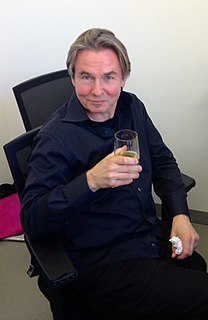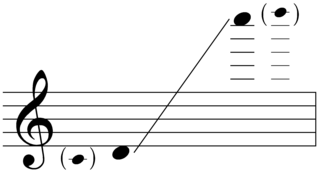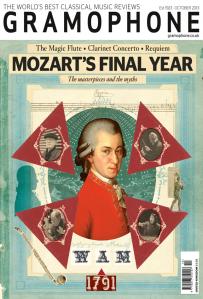
Esa-Pekka Salonen is a Finnish orchestral conductor and composer. He is principal conductor and artistic advisor of the Philharmonia Orchestra in London, conductor laureate of the Los Angeles Philharmonic, and music director-designate of the San Francisco Symphony.
Toimii is an ensemble for new music founded in the spring of 1980 by Finnish composer Magnus Lindberg with several other young composers and instrumentalists connected with the Sibelius Academy. Along with the new-music appreciation group Korvat auki, it did much to bring new music to listeners in Finland in the 1980s and 1990s.
Anssi Karttunen is a Finnish cellist.
The Avanti! Chamber Orchestra is a Finnish ensemble that focuses on contemporary music. The ensemble when it performs varies in size from a solo player to a symphony orchestra. Avanti! Chamber Orchestra won the Gramophone Prize with their first recording. The Orchestra also holds a music festival of its own each summer.
Nyx is a symphonic poem by the Finnish composer Esa-Pekka Salonen. The work was jointly commissioned by Radio France, the Barbican Centre, the Atlanta Symphony Orchestra, Carnegie Hall, and the Finnish Broadcasting Company. It was premiered February 19, 2011 in the Théâtre du Châtelet, Paris, with Salonen conducting the Orchestre Philharmonique de Radio France. The piece is titled after the Goddess Nyx from Greek mythology.
Foreign Bodies is an orchestral composition in three movements by the Finnish composer Esa-Pekka Salonen. The work was commissioned by the Finnish Broadcasting Company and was first performed at the Schleswig-Holstein Musik Festival on August 12, 2001 by the Finnish Radio Symphony Orchestra under the conductor Jukka-Pekka Saraste.
The Cello Concerto is a composition for solo cello and orchestra by the Scottish composer James MacMillan. It is the second of three interrelated compositions in MacMillan's Easter triptych Triduum commissioned by the London Symphony Orchestra. The piece was first performed at the Barbican Centre on October 3, 1996 by the cellist Mstislav Rostropovich and the London Symphony Orchestra under the conductor Colin Davis. The work is dedicated to Mstislav Rostropovich.
The Symphony No. 1 or Symphony: 'Vigil' is an orchestral symphony by the Scottish composer James MacMillan. It is the last of three interrelated compositions in MacMillan's Easter triptych Triduum commissioned by the London Symphony Orchestra. The piece was first performed at the Barbican Centre on 28 September 1997 by the London Symphony Orchestra under the conductor Mstislav Rostropovich.
Notes on Light is a cello concerto by the Finnish composer Kaija Saariaho. The work was commissioned by the Boston Symphony Orchestra and was first performed at Symphony Hall, Boston on February 22, 2007, by the cellist Anssi Karttunen and the Boston Symphony Orchestra under the conductor Jukka-Pekka Saraste.
The Concerto for Horn and Orchestra is a horn concerto by the American composer Elliott Carter. The work was commissioned by the Boston Symphony Orchestra for the horn player James Sommerville. It was first performed on November 15, 2007 in Boston by Sommerville and the Boston Symphony Orchestra under the conductor James Levine.
The Asko Concerto is a concerto for chamber orchestra by the American composer Elliott Carter. The work was commissioned by the Dutch chamber group Asko Ensemble, for which the piece is titled. It was composed in January 2000 and was first performed in Concertgebouw, Amsterdam on April 26, 2000, by the Asko ensemble under the conductor Oliver Knussen. The piece is dedicated to Asko/Schönberg.
The Cello Concerto No. 2 is the second cello concerto by the Finnish composer Magnus Lindberg. It was commissioned by the Los Angeles Philharmonic in June 2013 to fill the planned premiere date of Oliver Knussen's then delayed Cello Concerto. The work was first performed in the Walt Disney Concert Hall, Los Angeles, on October 18, 2013 by the Finnish cellist Anssi Karttunen and the Los Angeles Philharmonic under the direction of Esa-Pekka Salonen.
Kraft is a composition for solo ensemble, electronics, and orchestra by the Finnish composer Magnus Lindberg. The work was commissioned by the Helsinki Festival and was first performed on September 4, 1985 by the Toimii ensemble and the Finnish Radio Symphony Orchestra under the direction of Esa-Pekka Salonen. The piece was awarded the International Rostrum of Composers in 1986 and won the Nordic Council Music Prize in 1988.
The Concerto for Piano and Orchestra is the first piano concerto by the Finnish composer Magnus Lindberg. The work was commissioned by the Helsinki Festival on September 4, 1991 and completed in 1994. It is dedicated to the pianist Paul Crossley.
The World's Ransoming is a concerto for cor anglais and orchestra by the Scottish composer James MacMillan. It was the first of three interrelated compositions in MacMillan's Easter triptych Triduum commissioned by the London Symphony Orchestra. Its world premiere was given by the soloist Christine Pendrill and the London Symphony Orchestra under the direction of Kent Nagano at the Barbican Centre on 11 July 1996.
Sculpture is an orchestral composition by the Finnish composer Magnus Lindberg. The music was commissioned by the Los Angeles Philharmonic with support from the Koussevitzky Music Foundation to celebrate the orchestra's inaugural season at the Walt Disney Concert Hall. Its world premiere was given by the Los Angeles Philharmonic under the direction of Esa-Pekka Salonen on October 6, 2005.








